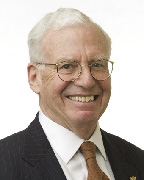Headlining global peace and hostility negotiations and forecasting national congressional progress, strange bedfellows have been everywhere. Commercial real estate has gradually evolved to reconcile strange bedfellows and surprising alliances in use and development and financing. Mixed use development was popularized by ULI decades ago. However, healthcare and educational and community uses are increasingly in the mix. Private/public partnerships have been heralded for decades. However, the non-profit sector has been expanding and non-profit sponsors are increasingly partners in development, extending beyond their longstanding role in affordable housing. The capital stack for commercial real estate development has been evolving to serve the mixing of uses and the surprising alliances that have become more prevalent if not revolutionary. These are all very hopeful dynamics for commercial real estate and the built environment. Underwriting and valuation of real property investments have evolved to reconcile the changing dynamics.
Mixed use is historic - homes above shops in the ancient Roman cities and villages. Multi-million dollar mega mixed-use developments in the CBD's attracted institutional funding and fueled ULI activity on panels, councils and publications. More recently local smart growth incentives from public loan and grant programs have linked transportation with a variety of uses on underdeveloped or under zoned sites and air rights. The mixture has expanded to include healthcare, education and community services as integral as well as ancillary uses. The scale and scope of mixed use have expanded to meet the markets. Recorded performance and feasibility have attracted capital investment once averse to the aggregation of risks versus so-called synergy of diverse uses which enhanced overall performance.
Sponsorship for commercial real estate development has traditionally been exclusively private sector, for-profit. Public/private partnerships have typically involved infrastructure arrangements and funding. For site control, sponsorship occasionally has been more complex. Affordable housing development has historically attracted non-profit sponsors because of purpose and eligibility for funding from targeted loan and grant programs. The non-profit sector has become increasingly robust, flush with funding and professional and skilled personnel. Hardly a strange bedfellow, the non-profit sponsor might be a surprising alliance partner. Agglomeration of uses for scale and synergy is smart; our 24-7 urban places have a mixture of uses and sponsors and are scalable.
The financial validation of these evolutionary changes in commercial real estate is apparent. The capital stack for commercial real estate has evolved to recognize and support an expanded mixture of uses and diversity of sponsorship, strange bedfellows and surprising alliances. Government and foundation funding has been expanded to support the services and uses wrapped up in the real estate. The underwriting is more complex, and some investment risks are without precedent and lack comparable performance. This dynamic is has its disruptors, willing to try new connections and combinations, and has certainly attracted its supporters. Let us hope that our strange bedfellows elsewhere are as successful.
Happy New Year.
David Kirk, CRE, MAI, FRICS, is principal and founder of Kirk & Company, Real Estate Counselors, Boston.
Tags:
Commercial real estate has evolved to reconcile strange bedfellows
December 12, 2014 - Appraisal & Consulting








